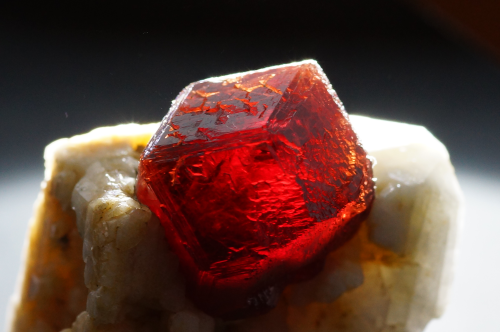
How a Mineral Specimen is Created
Oct 20, 2024
“Mineral specimen” is the term used by experts for particularly beautifully grown minerals and crystals. But what exactly are minerals?
Minerals are natural, mostly inorganic solids that are formed by geological processes over millions of years and have a defined chemical composition and an ordered crystal structure. They are the building blocks of rocks and are therefore of great importance for the earth and its geology. Their beauty and diversity also make them coveted collector's items. But how exactly does such a mineral formation take place and what conditions are necessary for it?
The origin begins deep below the earth's surface. Tectonic movements and volcanic activity push rocks to great depths, where they are exposed to high temperatures and enormous pressure. These conditions cause the chemical composition of the rock to change and new minerals are formed from the same chemical elements or the combination of different chemical elements. This process is known as metamorphosis.
In certain cases, cavities form in the rock, whether due to gas bubbles in volcanic lava flows or the washing out of limestone. Solutions rich in minerals can accumulate in these cavities. When the temperature and pressure change or when the solution cools, the minerals begin to precipitate and crystallize. The minerals are deposited on the walls of the cavity, often in the form of beautiful, well-formed crystals.
Water plays a decisive role in the formation of mineral stages. It acts as a transport medium for the dissolved minerals. In hot springs or through meltwater seeping through the rock, minerals are transported in dissolved form. When the water reaches the cooler, open cavities, its ability to hold the minerals in dissolved form decreases. This leads to crystallization, whereby the minerals are deposited on the matrix, i.e. the primary rock.
Not every cavity and not every solution will lead to the formation of mineral stages. Specific conditions are necessary for the formation of perfectly formed crystals. Slow cooling of the solution and a continuous inflow of mineral-rich solutions are ideal. Only in this way can the crystals form slowly and in their characteristic shape.
Some mineral specimens have achieved worldwide fame due to their exceptional beauty and rarity. The bright blue azurite specimens from the Tsumeb mine in Namibia, for example, are a coveted collector's item. Also world-famous are the deep red rhodochrosite mineral specimens from the Sweet Home Mine in Colorado, USA, which are among the most beautiful and valuable of their kind.
The formation of a mineral specimen is a lengthy and complex process that is deeply rooted in the geological activities of our earth. The beauty and diversity of these natural formations reflect the power and artistry of nature. For collectors and lovers of minerals, almost every corner of the earth offers an endless treasure trove.
Whether quartz, fluorite or other minerals - each mineral specimen is a million-year-old part of the unimaginable 4.6 billion years of the earth's history.
